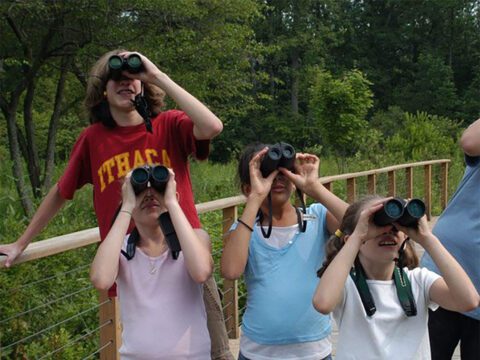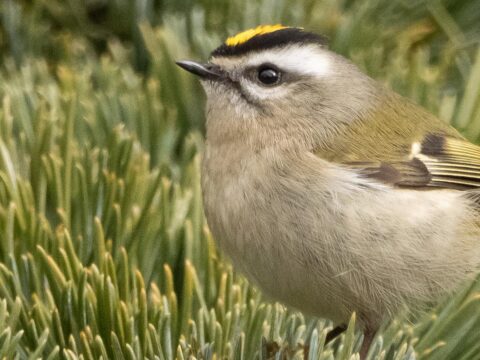How can I adjust my binoculars so I don’t see blacked-out areas?

Considering how expensive binoculars can be, it’s odd that most companies don’t include operating instructions in the package. Using binoculars is like riding a bike—easy once you get the hang of it.
Virtually all binoculars have several helpful features that allow them to be tailored to different users. This means that before you try to see birds through your binoculars, you need to make a few adjustments. Here’s how:
Adjust the Eyecups
The eyecups hold the ocular lenses (the lenses you look through) exactly the right distance from your eyes (this distance is called eye relief), to optimize magnification and cut out peripheral light, making the image clearer and brighter. Extend the eyecups if you don’t wear eyeglasses. Most eyecups have a few preset distances to choose from, to match the shape of your eyes and how you hold your binoculars. Since eyeglasses hold binoculars away from the eyes and let in peripheral light anyway, eyeglass wearers will want to fully retract the eyecups.
Adjust the Barrels
Next, set the barrels of the binoculars to match the distance between your eyes. Looking through them, adjust the barrels until you have a single image through both eyes. If the width isn’t set properly, your image will have blacked-out areas in the middle or at the edges.
Adjust the Diopter
Virtually all binoculars use a single center focus knob that controls the focus for both eyepieces simultaneously. But because most people’s eyes aren’t precisely matched, binoculars also have a separate dial called a diopter adjustment that compensates for the difference between your eyes. (Note that for people who wear corrective lenses, the correction will likely minimize the difference between your eyes and make the diopter adjustment less critical.) The diopter adjustment is usually below the right eyecup or on the center hinge of your binoculars and normally numbered from +2 to –2. You should only need to set the diopter once. Here’s how to adjust the diopter so you can use your binoculars without eyestrain:
More on Binoculars
- First find the diopter adjustment and set it at zero.
- Find something a good distance away that has clean lines. A sign or something else with letters or numbers is often a good choice.
- Cover the objective lens (the large outside lens of the binoculars) with the lens cap or your hand on the side controlled by the diopter adjustment, and then focus on the sign using the center focus knob. Try to keep both eyes open as you do this.
- Switch hands, uncovering the lens with the diopter adjustment and covering the other lens. Focus again, this time using the diopter adjustment, not the center focus.
- Repeat a couple of times to make sure. After you’re done, your sign should be crisply focused through both eyes.
- Notice the number setting on the diopter adjustment. Sometimes during normal use, the adjustment knob may get shifted, so every now and then when you start using them, check to make sure it’s set where it should be for your eyes.
Adjust the Neck Strap
Finally, make sure the neck strap is comfortable. Many people like the strap as short as it can be while still allowing you to put it over your head easily. This minimizes how much the binoculars will bounce against your chest or swing out and hit rocks, tables, or other objects whenever you bend down. Some birders like a little extra length so they can tuck the binoculars under one arm as a way of cutting down bounce. And many birders trade out their single neck strap for a binocular harness that takes some of the weight off your neck and holds the bins more securely to your chest.
If you’re new to birding, watch our free how-to video series, Inside Birding, to get started on identifying birds with confidence.

All About Birds
is a free resource
Available for everyone,
funded by donors like you
American Kestrel by Blair Dudeck / Macaulay Library




